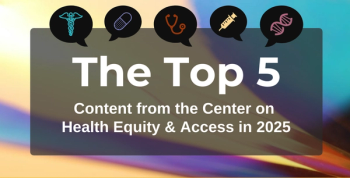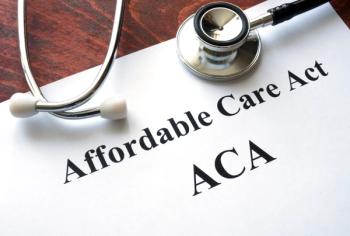
Evolution of HDHPs With VBID Components Can Improve Care for Chronic Disease
Over the course of the last 20 years, high-deductible health plans (HDHPs) have undergone an evolution. Today’s plans, with more high-value services covered predeductible, can improve care for people with chronic diseases, said panelists at the 2024 Value-Based Insurance Design (V-BID) Summit.
High-deductible health plans (HDHPs) have been around for 20 years, during which time the US health care system has undergone some dramatic changes, including the introduction of the Affordable Care Act (ACA) and its provisions.
The theme of the University of Michigan’s Center for Value-Based Insurance Design (V-BID)’s 2024 V-BID Summit was “Overcoming Financial Toxicity,” starting with a discussion around the successes and challenges of HDHPs based on research from the past 20 years and the evolutions to the products.
In the simplest terms, HDHPs have higher deductibles and lower premiums. Typically, they have a deductible of at least $1000 for an individual and $2000 for families and most services are subject to the deductible. Even early on, most HDHPs had some value-based exclusions, such as primary care visits and preventive care; however, when the ACA was passed into law in 2010, evidence-based preventive care was required to have $0 cost sharing, explained Frank Wharam, MD, MPH, professor of medicine at Duke University.
Approximately two-thirds of the privately insured population is in an HDHP, half of which have health savings accounts (HSAs). This amounts to approximately one-third of the total US population, he explained. This large proportion of the population in HDHPs is important because there are concerns about the effects HDHPs might have on reducing utilization and causing financial and physical harm.
Understanding about the potential effect of HDHPs starts even farther back than 20 years ago with the
The high-level takeaway was that “very high out-of-pocket [OOP] cost obligations were sort of a blunt instrument [that reduced] all types of care whether they were needed and high value or less needed and low value,” Wharam explained.
There were some exceptions, such as high-severity emergency department care, but generally all services went down. Overall, it was unsurprising that high cost sharing reduced health care spending simply because it reduced utilization.
Another important takeaway was that there was no observable impact on health outcomes. The only exception was for a subgroup of people who had low income with high morbidity who were predicted to have adverse health outcomes.
Stemming from the RAND Health Insurance Experiment and beyond, there are 7 major questions around HDHPs:
- Will a reduction in service use among HDHP members be indiscriminate or will patients distinguish high-value care from low-value care?
Wharam thinks it’s clear that when there are exclusions of high-value care, such as cancer screenings and diabetes management, those are preserved, but there’s also evidence that this care is preserved even when subject to the deductible. However, it’s important to note that people may be reducing other types of care to preserve these important ones.
“On the other hand, we do see that maybe people might be there might be offset people might be reducing other forms of care to preserve the type of care that's important to their major health condition,” he said. - Will HDHPs reduce health care costs and premiums or will the potential harms increases costs or result in no savings?
Research has made it clear that HDHPs do reduce health care costs by 5% to 15%. - Will HDHPs worsen health outcomes broadly, not at all, or among lower-income and chronically ill patients only?
There is not a lot of research in this area, but there was a study that found no overall impact on major adverse cardiovascular outcomes among a broad population with cardiovascular risks who were in HDHPs. However, other research found low-income patients with diabetes had an increased risk of acute diabetes complications and high-severity hospitalization days. - Will HDHPs facilitate expansion of health insurance?
Often, small employers will face the choice of offering no insurance or HDHPs, because they have lower premiums. One could argue that HDHPs do help preserve health insurance coverage, especially among smaller employers, Wharam said. “Although others would argue that that's really kind of an expansion of underinsurance for those employers,” he added. - Will HDHPs increase price awareness and financial toxicity awareness?
There is a lot more publicity and interest around health care costs and legislation to address it now that more people are seeing their OOP costs more in HDHPs. - Will HDHPs promote value shopping and therefore price competition among providers?
This might be wishful thinking. Wharam only knew of 1 study in this area and it showed no evidence of value shopping. “I’m not optimistic that value shopping and price competition among providers will happen because of [HDHPs],” he said. - Will people in HDHPs improve use of preventive care and their health in an attempt to reduce their OOP costs?
Wharam is pretty confident the answer is “no.” There has not been a study of HDHPs showing people were healthier or used more preventive care.
Overall, the research on HDHPs presents a mixed picture of the effects they have on patient health.
“There’s no evidence of high-deductible health plans making the overall population sicker,” Wharam said. “But, on the other hand, they don’t make members healthier, and they might worsen health outcomes for low-income, high-morbidity patients based on existing research.”
Stephen Parente, PhD, MPH, MS, professor in the Department of Finance and Minnesota Insurance Industry Chair of Health Finance in the Carlson School of Management at University of Minnesota, first started his research in this area when HDHPs were actually called medical savings accounts, and no one wanted to sign up for them.
When he moved to Minnesota in the 2000s, he worked with some new employers who were trying out HDHPs. The interesting thing was that they knew about the RAND Health Experiment and made primary prevention a requirement in the benefit design to avoid the issues seen in the experiment.
Looking at a selection of plans, having a chronic condition did not keep people away from these plans, as initially thought. Income level was a bigger correlate of whether or not someone decided to go into the plan.
A concern about HDHPs remained how they would affect people with chronic conditions, such as diabetes, asthma, and depression. More than 10 years ago, Parente and the V-BID Center modeled a benefit design that made secondary prevention available predeductible, and they determined that such a design would save money and more people would move into it.
Researchers know that people are picking HDHP+ plans, but there isn’t claims information to know if costs are going up or down, if health outcomes are being affected, or if people are getting the services they need. Parente is now working on understanding what would happen if that coverage was expanded even more. This includes adding more drugs for chronic conditions and full primary care and some specialty care for people with chronic conditions predeductible.
In 2003, the Medicare Modernization Act created the HSA market. In HDHP-HSA plans, members pay OOP with the pre-tax HSA money, but preventive care was excluded and could be covered predeductible. However, the definition of what constituted good preventive care was very narrow at the time, explained Katy Spangler, principal at Spangler Strategies.
The reason why it was so important to expand the list of what can be provided predeductible is because previously a patient could be screened for a disease, but once a diagnosis was made, treating the condition could not be delivered predeductible, she said.
In the years since the previous administration expanded the list of predeductible benefits in 2019, there has been work to understand what happened. The Smarter Healthcare Coalition, of which Spangler is a codirector, partnered with AHIP to
A month later, the
Now, there is a push to expand flexibility for high-value services, such as mental and behavioral health counseling, naloxone to treat drug overdoses, and some primary care and even specialty care visits.
“One thing that we have heard…it's great that [a patient’s] insulin could be offered predeductible, but the visit for the prescription for the insulin is not [covered] predeductible and that creates a new barrier for some patients,” Spangler said.
Newsletter
Stay ahead of policy, cost, and value—subscribe to AJMC for expert insights at the intersection of clinical care and health economics.








































